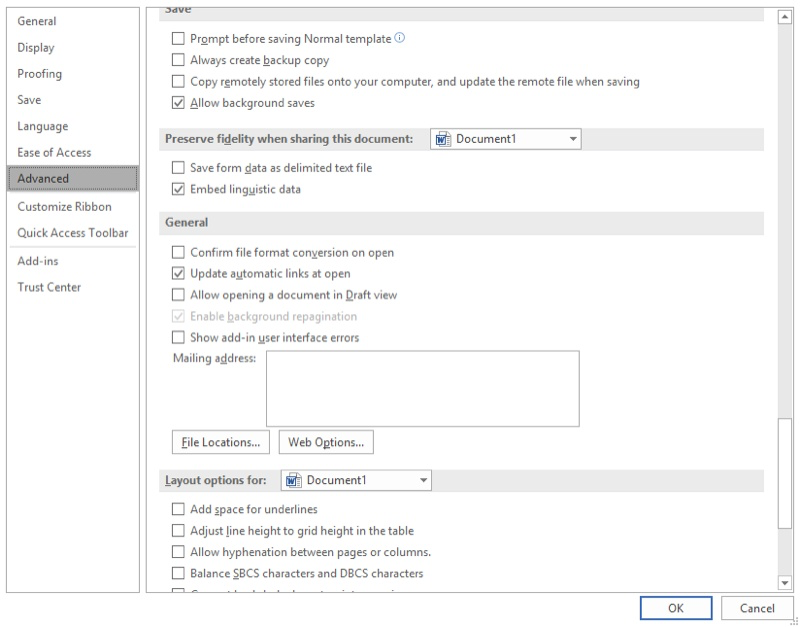Please Note: This article is written for users of the following Microsoft Word versions: 2007, 2010, 2013, 2016, 2019, 2021, 2024, and Word in Microsoft 365. If you are using an earlier version (Word 2003 or earlier), this tip may not work for you. For a version of this tip written specifically for earlier versions of Word, click here: Automatically Updating Fields and Links.
Written by Allen Wyatt (last updated March 15, 2025)
This tip applies to Word 2007, 2010, 2013, 2016, 2019, 2021, 2024, and Word in Microsoft 365
Stephanie wondered if there is a way in Word to force the updating of all fields and links in a document when either opening or saving (closing) the file. She knows that she can force updates prior to printing, but she was looking, specifically, for the open or close method of updating.
You can automatically update both fields and links when you print a document, but Word treats the two items differently when you are opening a file. Word provides a way to always update your links when opening a document. You can do this by following these steps:

Figure 1. The General area of the Word Options dialog box.
That setting should make sure that all your links are always up to date. If you want to update the fields when the document is opened, you'll need to use a macro to accomplish the task. Specifically, you'll need to use either an AutoOpen or AutoClose macro, depending on whether you want to update the fields when the document opens or closes. The following is an example of an AutoOpen macro you can use.
Sub AutoOpen()
With Options
.UpdateFieldsAtPrint = True
.UpdateLinksAtPrint = True
End With
ActiveDocument.Fields.Update
End Sub
Note that the macro makes sure that the options are set to force updating the fields and links when printing occurs, then it updates all the members of the Fields collection in the document. If you, instead, wanted to update the fields at closing, you could use this macro:
Sub AutoClose()
ActiveDocument.Fields.Update
End Sub
This macro is much shorter because there is no need to set the update-on-print options when you are exiting the document.
Note:
WordTips is your source for cost-effective Microsoft Word training. (Microsoft Word is the most popular word processing software in the world.) This tip (978) applies to Microsoft Word 2007, 2010, 2013, 2016, 2019, 2021, 2024, and Word in Microsoft 365. You can find a version of this tip for the older menu interface of Word here: Automatically Updating Fields and Links.

Create Custom Apps with VBA! Discover how to extend the capabilities of Office 365 applications with VBA programming. Written in clear terms and understandable language, the book includes systematic tutorials and contains both intermediate and advanced content for experienced VB developers. Designed to be comprehensive, the book addresses not just one Office application, but the entire Office suite. Check out Mastering VBA for Microsoft Office 365 today!
Sections are handy if you want to subdivide a document so you can apply different document formatting to those ...
Discover MoreWord allows you to specify distances using a number of different measurement units. Figuring out how those measurement ...
Discover MoreScreen tips can be helpful to people reading your document on-screen. Using the technique described here, you can add ...
Discover MoreFREE SERVICE: Get tips like this every week in WordTips, a free productivity newsletter. Enter your address and click "Subscribe."
There are currently no comments for this tip. (Be the first to leave your comment—just use the simple form above!)
Got a version of Word that uses the ribbon interface (Word 2007 or later)? This site is for you! If you use an earlier version of Word, visit our WordTips site focusing on the menu interface.
Visit the WordTips channel on YouTube
FREE SERVICE: Get tips like this every week in WordTips, a free productivity newsletter. Enter your address and click "Subscribe."
Copyright © 2026 Sharon Parq Associates, Inc.
Comments